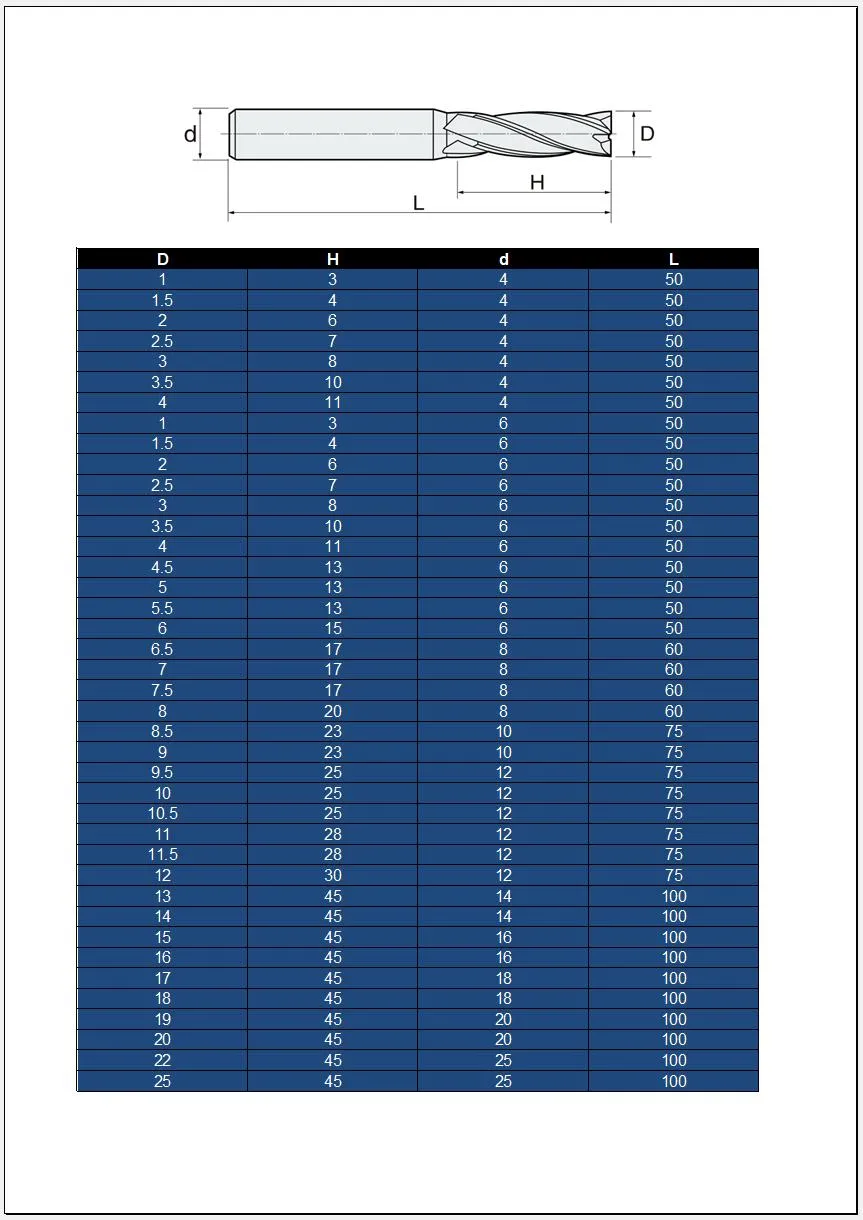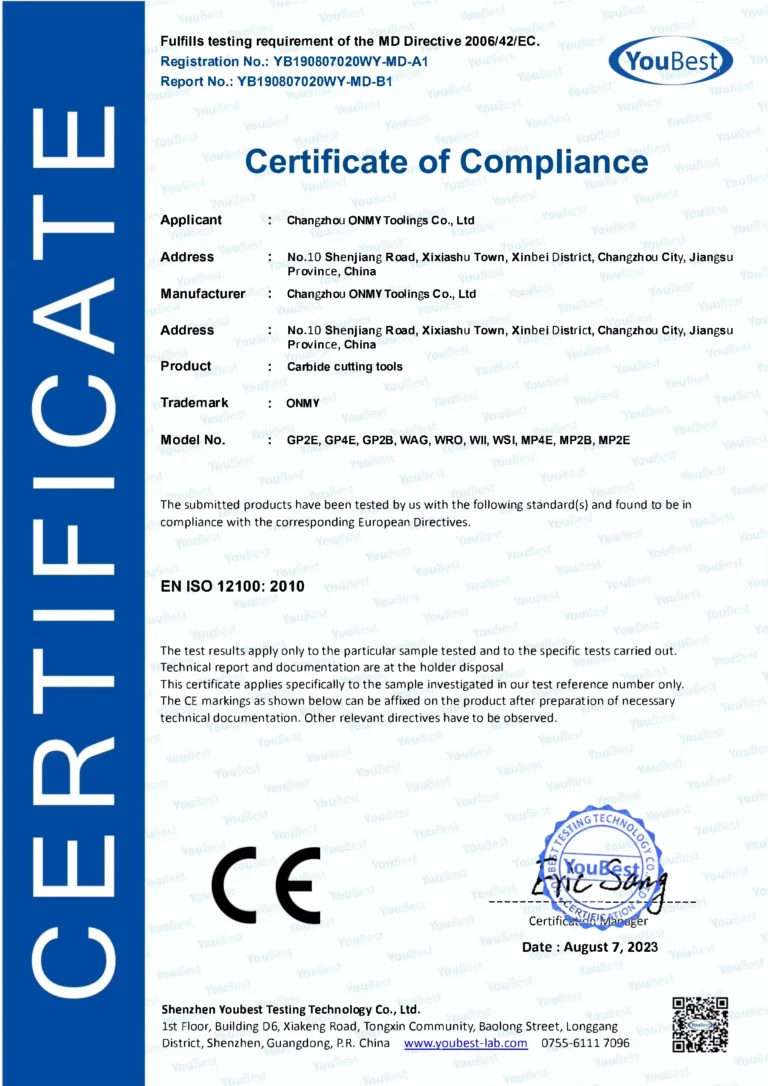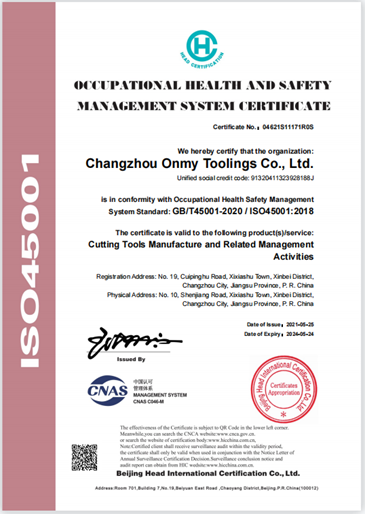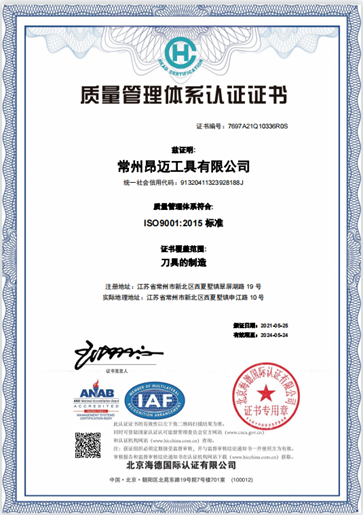4 flüt uç değirmeni
A 4 flute end mill is a rotary cutting tool commonly used in milling operations for machining materials like metal, plastics, and wood. It features four helical cutting edges (flutes) that run along its cylindrical body, allowing for efficient material removal and smooth surface finishes. The four-flute design provides a balance between chip evacuation and cutting stability, making it suitable for a wide range of applications. These end mills can perform both side cutting and plunging operations, and are often used for tasks such as slotting, profiling, and contouring in various industries including manufacturing, aerospace, and automotive.
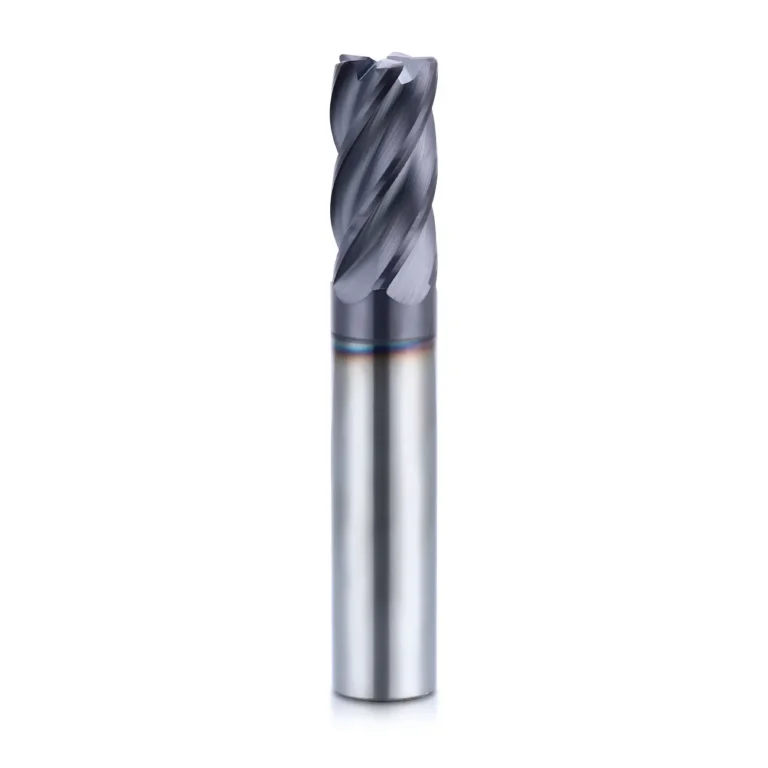
4 flute end mill Application
4 flute end mills have a wide range of applications in machining. Here’s a concise overview of their main uses:
- General milling operations
- Slotting and slot milling
- Profiling and contouring
- Side milling
- Plunge cutting
- Finishing passes
- Machining harder materials
- High-speed machining
- Precision work in aerospace and automotive industries
- Mold and die-making
These end mills are particularly effective when working with metals like steel, stainless steel, and aluminum. They’re often chosen for their ability to produce smooth finishes and maintain dimensional accuracy.
4 flute end mill Features
4 flute end mills are a versatile cutting tool commonly used in various machining applications. Here are four of their key features:
1. Increased Core Thickness and Strength
- Compared to end mills with fewer flutes, 4 flute end mills have a thicker core.
- This thicker core provides enhanced rigidity, reducing tool deflection during cutting.
- This translates to better accuracy and improved surface finish.
2. Reduced Chip Load
- The four flutes distribute the cutting load more evenly.
- This reduced chip load per flute results in smoother cutting action.
- It helps prevent chip build-up and improves overall cutting efficiency.
3. Çok yönlü uygulama
- 4 flute end mills are suitable for a wide range of materials, including cast iron, tool steel, stainless steel, and heat-treated steels.
- They can be used for various machining operations such as slotting, profiling, and pocketing.
4. Improved Surface Finish
- Due to the reduced chip load and increased rigidity, 4 flute end mills produce better surface finishes compared to end mills with fewer flutes.
- This is especially beneficial for applications where a smooth surface is required.
Most of Chinese suppliers have same quality, but we are not the same,why?


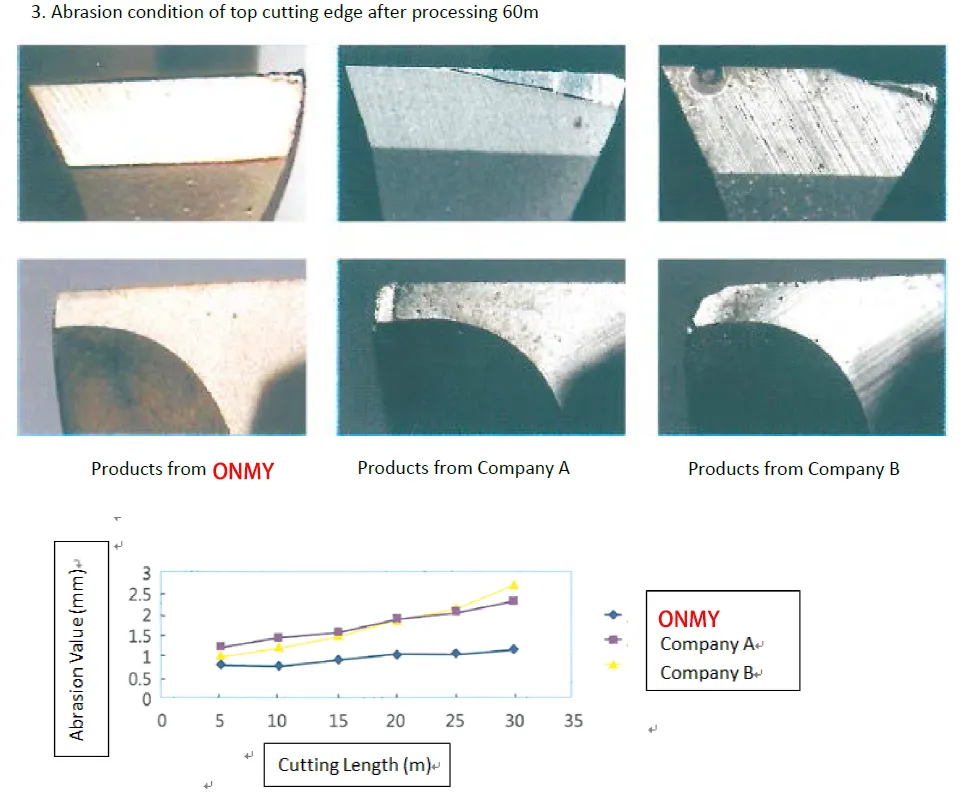
Onmy takım farkı
Tek flüt uç değirmenimizi ayıran nedir? Bu bizim eşsiz kombinasyonumuz:
Gelişmiş karbür formülasyonları
Güç ve aşınma direnci için optimize edilmiş tescilli mikro tahıl karbür karışımları kullanıyoruz.
Yenilikçi Geometriler
Patentli flüt tasarımlarımız çip tahliyesini en üst düzeye çıkarır ve kesme kuvvetlerini en aza indirir.
Son teknoloji ürünü kaplamalar
Isı direncini arttıran ve sürtünmeyi azaltan nano-dayalı PVD kaplamalar uyguluyoruz.
Hassas öğütme
Çok eksenli CNC öğütücülerimiz ± 0.0005 inç kadar sıkı toleranslar elde eder.
Fabrika sertifikası
Bu sertifikalar sadece süslü rozetler değil, ürettiğimiz her araçta tutarlı, üst düzey kalite garantinizdir. Kalite kontrol sürecimiz, her bir aletin titiz standartlarımızı karşılamasını sağlamak için kritik boyutların% 100 incelemesini ve gelişmiş aşınma direnci testini içerir.

Mükemmellik Yolculuğumuz
Hikayemiz büyük bir rüya ile küçük bir atölyede başladı: dünyanın en iyi boğa burun uç fabrikalarını yaratmak. Bugün, en son CNC öğütme teknolojisi ve gelişmiş kaplama sistemleri ile donatılmış son teknoloji ürünü 50.000 metrekarelik bir tesis işletiyoruz. Ancak gerçek gücümüz, uzmanlıklarını ürettiğimiz her araca döken tutkulu mühendisler ve yetenekli ustalar ekibimizde yatmaktadır.
Özel ihtiyaçlarınıza göre özel son fabrikalar elde edebileceğiniz zaman neden hazır çözümlere razı oluyorsunuz? Şirket içi araştırma ve geliştirme ekibimiz, işleme teknolojisinde mümkün olanın sınırlarını sürekli olarak zorlamaktadır. Malzeme bilimi ve kesme aracı tasarımının ön saflarında kalmak için önde gelen üniversiteler ve endüstri ortakları ile işbirliği yapıyoruz.
Don't just take our word for it. Here's what our satisfied customers have to say:
Mutlu müşterim!

Özel teklifinizi şimdi alın!
P.S. Toplu indirimler sunduğumuzdan bahsettik mi? Ne kadar çok sipariş verirseniz, o kadar çok tasarruf edersiniz!
- Rakipsiz Fabrika Düzenli Fiyatlandırma: Aracıyı kesin ve perakende fiyatlarına kıyasla% 40'a kadar tasarruf edin. Verimli üretim sürecimiz, rekabetçi oranlarda prim kalitesi sunmamızı sağlar.
- Yıldırım Hafif Teslimat: Aerodinamik üretim sürecimizle, sektör lideri geri dönüş süreleri sunuyoruz. Özel uç fabrikalarınızı 7 gün gibi kısa bir sürede alın! Hemen sevkiyat için standart boyutlarda büyük bir envanter sağlıyoruz.
- Kişiselleştirilmiş Hizmet: Uzman mühendisler ekibimiz, benzersiz işleme zorluklarınız için mükemmel bir çözümü bulmanıza yardımcı olmaya hazırdır. Özel ihtiyaçlarınızı analiz etmek ve ideal araç özelliklerini tavsiye etmek için ücretsiz danışmanlıklar sunuyoruz.
Sıkça Sorulan Sorular
- Daha yumuşak malzemelerdeki kaba işlemler için: 3 flüt uç değirmeni iyi bir seçim olabilir.
- İşlemler veya daha sert malzemeler için: 4 flüt uç değirmeni genellikle tercih edilir
4 flute end mills are primarily used for:
- General milling operations in metals and plastics
- Slotting and groove cutting
- Profiling and contouring complex shapes
- Side milling for creating straight edges
- Finishing passes to achieve smooth surfaces
- Plunge cutting for creating holes or pockets
- High-speed machining operations
- Precision work in aerospace and automotive parts
- Mold and die making
- Machining harder materials like stainless steel
They’re favored for their balance of cutting efficiency and surface finish quality, especially in materials like steel and aluminum. The four-flute design allows for faster feed rates compared to two-flute mills, while still maintaining good chip evacuation.
2 Flute End Mills:
- Better chip evacuation
- Ideal for softer materials (e.g. aluminum, brass, plastics)
- Preferred for deep pockets and slots
- Higher feed rates possible
- Better for plunge cutting
- More suitable for roughing operations
4 Flute End Mills:
- More cutting edges for smoother finishes
- Better for harder materials (e.g. steel, stainless steel)
- Increased stability and reduced vibration
- Superior for side milling operations
- Better for maintaining tight tolerances
- More suitable for finishing operations
Key differences:
- Chip clearance: 2 flute better
- Surface finish: 4 flute generally superior
- Material suitability: 2 flute for softer, 4 flute for harder
- Cutting speed: 4 flute typically faster
- Application: 2 flute for roughing, 4 flute for finishing
Yes, 4 flute end mills can be used for aluminum, but they’re not always the optimal choice. Here’s a brief explanation:
- Possible, but not ideal: 4 flute end mills can machine aluminum, especially in finishing operations.
- Chip evacuation: The main concern is that aluminum tends to produce long, stringy chips. 4 flute mills have less space between flutes for chip evacuation.
- Heat buildup: More flutes can lead to more heat generation, which is problematic with aluminum as it can cause the material to become gummy.
- Better alternatives: 2 or 3 flute end mills are generally preferred for aluminum. They offer better chip clearance and heat dissipation.
- Specific cases: High-speed machining of aluminum or finishing passes where surface finish is critical might benefit from a 4 flute tool.
- Coatings: If using a 4 flute mill on aluminum, look for ones with appropriate coatings to reduce friction and heat.
In summary, while it’s possible to use a 4 flute end mill on aluminum, it’s often not the first choice due to chip evacuation concerns. The best tool depends on the specific operation and requirements.
- Bulk material removal: Quickly removing large amounts of material from workpieces.
- Hogging: Aggressive cutting to create rough shapes or cavities.
- Roughing passes: Preparing a workpiece for subsequent finishing operations.
- High metal removal rates (MRR): Maximizing the volume of material removed per unit time.
- Machining harder materials: Effective on tough materials like steel and stainless steel.
- Creating pockets: Rapidly hollowing out areas in a workpiece.
- Stock removal: Quickly reducing the size of raw stock.
- Adaptive milling: Used in modern CNC strategies for efficient material removal.
- Slotting: Creating rough slots or grooves.
- Preparation for finishing: Setting up the workpiece for final dimensioning and surface finishing.
Generally, 2 flute end mills are preferred for machining aluminum.
- Chip evacuation: Aluminum produces long, stringy chips. The larger flute spaces in a 2 flute end mill allow for better chip clearance, preventing chip build-up and clogging.
- Material removal rate (MRR): While 4 flute end mills can theoretically achieve higher MRR, the chip evacuation issue often offsets this advantage in aluminum machining.
- Tool life: In many cases, 2 flute end mills can provide longer tool life in aluminum due to the reduced stress on the cutting edges.
Exceptions
That said, there are situations where a 4 flute end mill might be considered for aluminum:
- Finishing operations: For very fine finishes, a 4 flute end mill might be preferred due to its smoother cutting action.
- Small diameter end mills: In some cases, with small diameter end mills, a 4 flute might offer better rigidity.
- High-speed machining (HSM): Under specific HSM conditions, a 4 flute end mill can be effective.
Ultimately, the best choice depends on specific factors such as:
- Alüminyum alaşımı
- Cutting conditions (speed, feed, depth of cut)
- Desired surface finish
- Tooling availability

